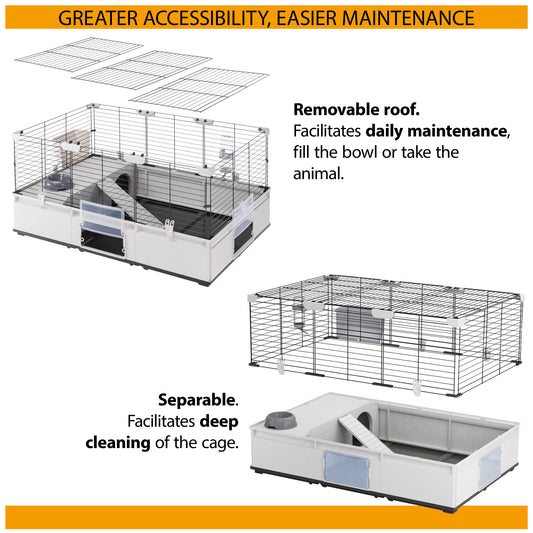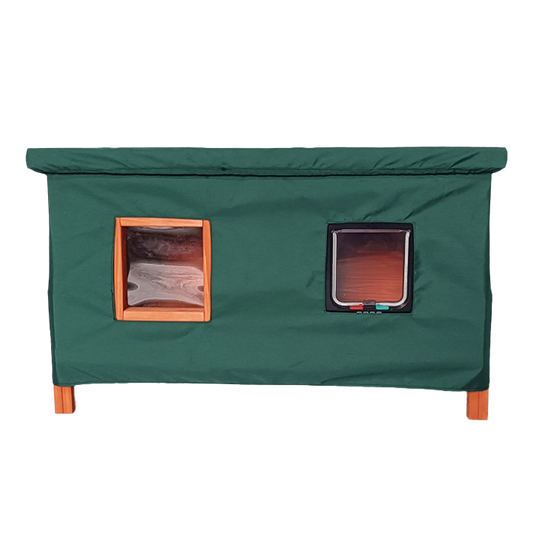It’s not just children returning to school after the summer who can struggle to get back into a routine – our pets often need help adjusting to changes in their own lives too. This can be tricky, especially if changes are being made to a long-standing routine or familiar way of doing things. Some changes are unavoidable but there are ways in which we can change our pets’ routines to make the process easier for them.
The importance of routine
With no watches to tell our pets when it’s time for dinner or when we are likely to be home from work, they must rely on their internal body clocks to navigate them through the day. Animals need predictability in life, and routines help to achieve this, giving pets a sense of calm and safety. Doing the same things at the same times every day is reassuring for a pet and helps them to feel comfortable.
Opening the kitchen cupboard at 6pm each day will tell a dog that it is dinner time, whereas an owner picking up their bag to leave the house at 8am each day tells a cat it’s nap time. Even the slightest change to these indicators can turn a pet’s day upside down, leaving them confused and disorientated.
Routines help our pets feel secure because they always know what is going to happen next. If things change even slightly, they can become unsettled, anxious, stressed, or even develop behavioural issues.
A consistent routine also helps to strengthen the bond between pet and owner through building trust. If a pet knows that they can rely on their owner to deliver at certain times it makes them feel happy and secure.
What to do if your pet’s routine is about to change
With any changes that concern a pet – from a difference in mealtimes to moving house or even changing owner – it is better to make the transition as gradual as you can to prevent any large shocks. This is not always possible of course but if you are able to help your pet make small steps towards a change of routine it will reduce the overall level of stress involved.
Write a list of the specifics that will be changing – such as timings, locations or people – and plan out how you can break the process down into smaller steps that your pet will be more likely to cope with. For example, if your dog is used to being fed at 4pm on the dot but a change of work schedule means you will not be able to feed them until 6pm, try to feed them at later increments over a few days so they can get used to it, rather than a sudden 2-hour delay in their dinnertime.
If you have always been the person to take your dog out for their lunchtime walk but now need to use a dog walker, ensure that your pet has opportunities to meet the walker beforehand and, ideally, for your pet to be able to spend time with both of you together for a smoother transition.
Only change what you must
Try to change as little as possible in your pet’s routine. For example, you might be changing the times that you feed your dog but if you can stick to their usual walk times it will help them to adapt. If you must employ a dog walker to start taking your dog out during the day, can they keep to your pet’s existing exercise times and routes?
If you are taking your dog on holiday with you or you must change where your pet spends the day, can you keep to their usual feeding routine to help them feel more settled?
Holiday blues
We are all familiar with the flat feeling that comes at the end of a particularly enjoyable holiday when we must get back to normal. Pets are no different and after having more time with their families, dogs in particular can struggle getting back into their usual routine. Plan to start reintroducing the routine a few days beforehand if you can, so that it is not such a shock to your pet if everyone suddenly disappears at once.
The UK Covid-19 lockdown may not have felt like a holiday for most of us but it was a great time for pets. With schools closed, and people working from home or on furlough, suddenly family pets had constant companionship throughout the day. It was particularly difficult for these pets when things returned to normal. In the PDSA Paw Report 2020, it was revealed that since the start of lockdown, 5% of dog owners saw their pet showing signs of distress when left alone and 20% of owners reported a new problem behaviour such as scratching, prolonged howling or toileting in the home.
Preparing your pet to be left home alone
Dogs are social animals so tend to find adapting to being alone rather more difficult than cats. Ideally, you will have got your dog used to spending time away from you when they were young as part of their puppy socialisation. However, if you have rehomed an older dog or have just never had to leave your dog before, it can be trickier to convince them that being home alone is fun.
To prepare your pet for being left, make sure you are not inadvertently rewarding any attention seeking behaviour. Be the one to initiate interactions and don’t respond to your pet every time they try to get your attention. Your pet needs to learn that you are not always available to them and sometimes you may not be there at all!
Invite your dog or cat to play at regular intervals during the day, and choose a time that suits you to do some training or have a grooming session with cat grooming tools or dog grooming tools. The important thing is that it is you making the decision on when and how long these periods of interaction are.
When you are at home, try spending some time away from your pet. This might be difficult to start with if you have a pet that constantly follows you around the house like a shadow. Take things slowly so that your cat or dog doesn’t suddenly think you are abandoning them.
Stairgates are a great way to keep your dog in a different room while allowing them to still be able to see you. Over a few days you can gradually increase the amount of time that you are separated, progressing to going out of view for short periods.
When you are separated from your dog or cat, make sure that they have something to do. If a pet is kept busy, they’ll be less likely to get stressed, anxious or bored. Stuffed Kong toys and puzzle feeders are a great way to give your pet a mental workout, which will keep them happy while you are not with them.
Once your pet is used to you being out of view for a time, you can practise leaving the house. Keep departures brief to start with and don’t forget to give your pet something to do or eat just before you leave as a distraction.
It can help to get rid of a pet’s anxious energy with some physical exercise before you leave them home alone. If you have a session of playing with your cat with a cat toy, or take your dog for a walk or game of fetch with a Chuckit ball before leaving, it is highly likely they will use the time you are away to have a much-needed nap. A tired pet is generally a happy pet and will be less likely to have the energy to make excessive noise or cause destruction in the home in your absence.
The importance of low-key leaving
If you make a big fuss of your pet every time you leave the house or arrive home, you will be reinforcing the idea that going out is a big deal and that your pet is right to feel anxious about it. Give your pet something to entertain them while you’re gone and slip out quietly. When you return, greet them calmly and then carry on as normal.
It might not seem right to leave the house without saying goodbye to your pet but sneaking out when they are preoccupied will mean that they won’t get the chance to get anxious about your leaving and will settle quicker.
Signs that your dog is unhappy being left
- Change of behaviour – Has your dog started panting, pacing or whining while you are getting ready to go out, particularly when they pick up on cues such as you putting on shoes or picking up keys?
- Barking or howling – If you hear your dog making a lot of noise just after you leave or as you return home, it could be a sign that they are not happy. Speak to your close neighbours to see if they have noticed your dog being particularly noisy when you are not there. Does it tend to be just a few minutes after you leave or is it consistently on and off during the time you are away?
- Toileting accidents – If your dog is usually clean in the house and you’ve not left them for very long, it could be a sign of anxiety.
- Destructive behaviour – Furnishings chewed or flooring ripped is a sign of an anxious or bored pet, and scratches or chew marks around the doors and windows is indicative of a stressed dog trying to escape. A dog can also show destructive behaviour by harming themselves through persistent licking or biting of their paws or tail.
A webcam can be a very handy tool to enable you to find out what your pet gets up to when you’re not at home. If you are concerned that your pet is overly distressed, it is a good idea to seek a referral to a pet behaviourist who can advise you on how best to help them.
Calming products available
Some anxious pets can find calming products beneficial when it comes to facing unsettling changes. If your pet is particularly distressed or harming themselves, you should seek professional advice from your vet. However, if their symptoms are mild or you want to use something as a preventative measure during a time of potential stress, here are some things you can try:
- Pet remedy natural diffuser plug-in – This special blend of essential oils has been clinically proven to help calm and de-stress animals of all types. You simply plug the diffuser into a socket near to where your pet spends most of their time to provide natural stress relief for cats and dogs. These diffusers are popular with owners of pets suffering from firework or thunderstorm phobias but can be used in any situation where anxiety is caused.
- Valerian compound – Valerian is a well-known sedative and this special formulations for pets can help calm frightened, anxious, and stressed pets quickly. You can drop it directly into your pet’s mouth, add it to food or even add a few drops on to bedding to see an effect. Within 30 mins you should see a noticeable change in an anxious pet, without any side-effects like drowsiness.
- Calming sprays – The Pet Remedy spray and Beaphar calming home spray contain valerian and can be used to help alleviate stress in dogs and cats by spraying them on bedding, around the home or in the car.
- Calming collars – Cat calming collars and dog calming collars by Beaphar are enhanced with valerian and when worn by a cat or dog can combat anxiety and stress for up to six weeks.









